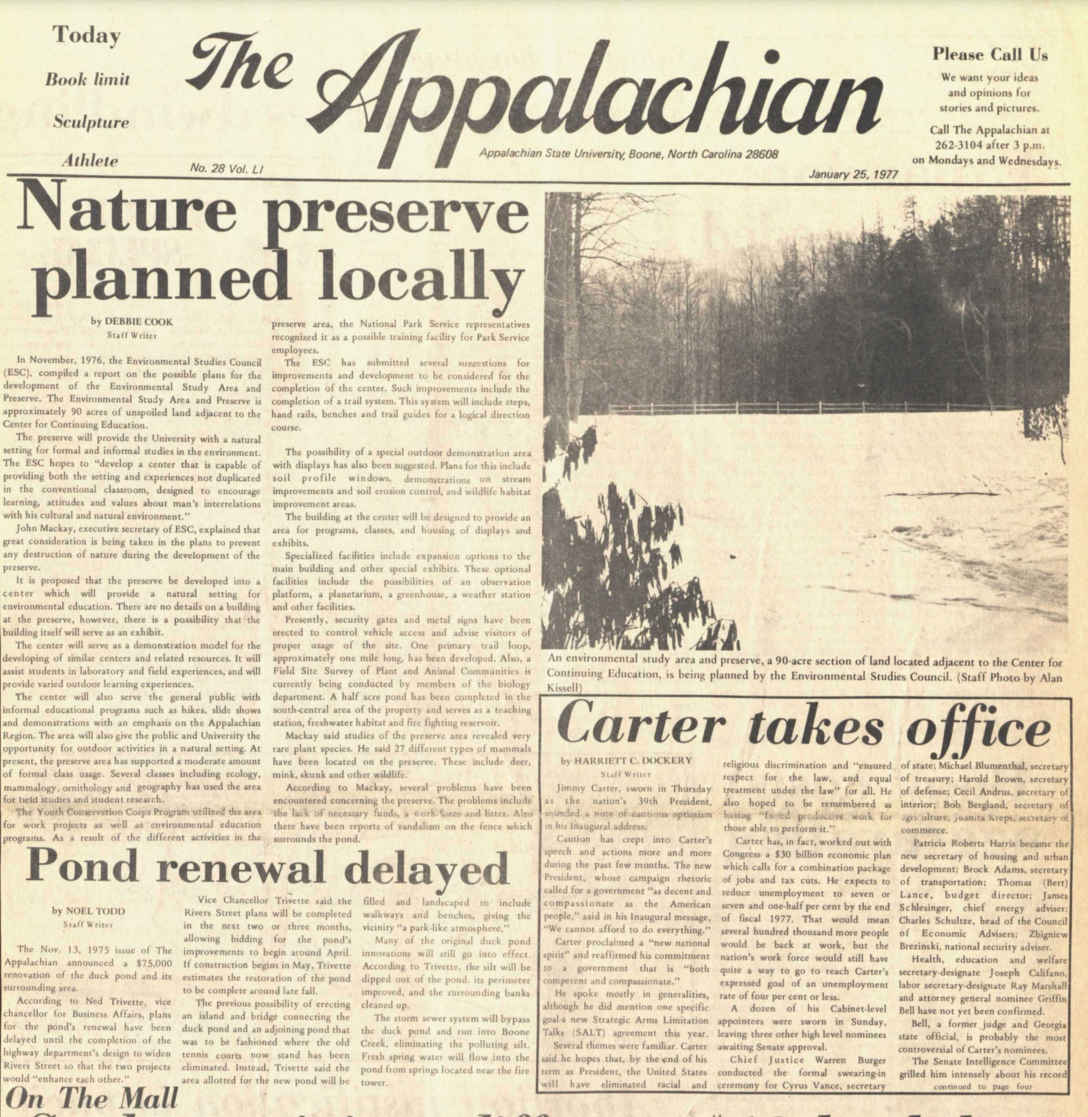Madalyn Edwards curated this story by Debbie Cook, which The Appalachian published Jan. 25, 1977.
In November, 1976, the Environmental Studies Council (ESC), compiled a report on the possible plans for the development of the Environmental Study Area and Preserve. The Environmental Study Area and Preserve is approximately 90 acres of unspoiled land adjacent to the Center for Continuing Education.
The preserve will provide the University with a natural setting for formal and informal studies in the environment. The ESC hopes to “develop a center that is capable of providing both the setting and experiences not duplicated in the conventional classroom, designed to encourage learning, attitudes and values about man’s interrelations with his cultural and natural environment.”
John Mackay, executive secretary of ESC, explained that great consideration is being taken in the plans to prevent any destruction of nature during the development of the preserve.
It is proposed that the preserve be developed into a center which will provide a natural setting for environmental education. There are no details on a building at the preserve, however, there is a possibility that the building itself will serve as an exhibit.
The center will serve as a demonstration model for the developing of similar centers and related resources. It will assist students in laboratory and field experiences, and will provide varied outdoor learning experiences.
The center will also serve the general public with informal educational programs such as hikes, slide shows and demonstrations with an emphasis on the Appalachian Region. The area will also give the public and University the opportunity for outdoor activities in a natural setting. At present, the preserve area has supported a moderate amount of formal class usage. Several classes including ecology, mammalogy, ornithology and geography has used the area for field studies and student research.
The Youth Conservation Corps Program utilized the area for work projects as well as environmental education programs. As a result of the different activities in the preserve area, the National Park Service representatives recognized it as a possible training facility for Park Service employees.
The ESC has submitted several suggestions for improvements and development to be considered for the completion of the center. Such improvements include the completion of a trail system. This system will include steps, hand rails, benches and trail guides for a logical direction course.
The possibility of a special outdoor demonstration area with displays has also been suggested. Plans for this include soil profile windows, demonstrations on stream
improvements and soil erosion control, and wildlife habitat improvement areas.
The building at the center will be designed to provide an area for programs, classes, and housing of displays and exhibits.
Specialized facilities include expansion options to the main building and other special exhibits. These optional facilities include the possibilities of an observation platform, a planetarium, a greenhouse, a weather station and other facilities.
Presently, security gates and metal signs have been erected to control vehicle access and advise visitors of proper usage of the site. One primary trail loop, approximately one mile long, has been developed. Also, a Field Site Survey of Plant and Animal Communities is currently being conducted by members of the biology department. A half acre pond has been completed in the south-central area of the property and serves as a teaching station, freshwater habitat and fire fighting reservoir,
Mackay said studies of the preserve area revealed very rare plant species. He said 27 different types of mammals have been located on the preserve. These include deer, mink, skunk and other wildlife.
According to Mackay, several problems have been encountered concerning the preserve. The problems include the lack of necessary funds, a work force and litter. Also there have been reports of vandalism on the fence which surrounds the pond.




Shelly Brown • Jan 23, 2025 at 1:30 pm
Is the preserve area still open?